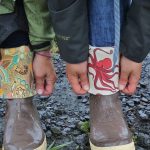The newly released 2012 American Camper Report by the
Outdoor Foundation (OF)-the non-profit arm of the Outdoor Industry
Association-shows camping participation jumped from 39.9 to 42.5 million U.S.
participants in 2011, equating to about 14.9 percent of Americans over age 6.
The 2012 report, the leading tool tracking participation in camping in the
United States, is sponsored by The Coleman Company and KOA Campgrounds and provides
data and analysis on overall camping participation and explores preferences,
buying behavior and projections on camping.
Results are based on an online survey of more than 38,000
people ages 6 and older, and a supplementary survey of camping participants 18
and older. “The information and analysis in this report will help the outdoor
industry and all stakeholders engage even more Americans in camping and
transform non-participants into active outdoor enthusiasts and committed
environmental stewards,” said Chris Fanning, executive director of the Outdoor
Foundation.
Camping participants were outdoors for 534.9 million days in
2011, averaging 12.6 days each. Among children and young adults, participation
rates returned to their 2009 numbers, with only the adolescent group not
gaining numbers. Report findings emphasize the importance of introducing
children to camping at an early age.
In what OF calls the Leaky Bucket Analysis, the report
showed a churn rate of 16 percent-many participants start camping but many also
stop each year-preventable by engaging new campers while at the same time
focusing on keeping current participants.
Regionally, according to KOA Campground System Performance,
New England, the South Central and North Central regions all gained
camper-nights, as did the Northwest, while participation in the Southwest, Mid
Atlantic and Southeast fell. The Mountain region has the highest participation
rate at 25 percent, representing 12 percent of total U.S. participation.
The division of camper participation by demographic is
particularly interesting. The male/female split is almost even with males
slightly higher at 53 percent. Campers are 84 percent Caucasian, and 27 percent
report an income of $100,000 annually or higher. The report also details
spending habits in depth.
Median age has increased slightly over the years but remains
steady from 2010 at 32. A whopping 84 percent of campers participate in
multiple outdoor activities, with hiking being the most popular (76 percent).
Most participants (39 percent) take one to three camping
trips per year. Twenty-three percent of participants take six to 11 camping
trips per year; 14 percent take 12 to 23 trips per year; and those taking more
than 52 trips per year decreased from four to three percent in 2011. The report
indicates that 77 percent of participants are married or living with a domestic
partner, and 22 percent of participating households have children ages 6-12
living at home, indicating the family-friendly nature of camping. Seventy
percent of trips are taken with friends. Breaking campers down by type, 66
percent camp in tents, 12 percent in RVs, and 6 percent in cabins. Other
categories include Drive-Up, Bivy and Backyard.
Of particular note is the study’s focused look at Hispanic
Americans, primarily due to the demographic’s projected growth in proportion to
U.S. population over the next decade. Hispanic Americans were found to make up
six percent of total U.S. camping participants, taking 33.1 million outings
with an average 5.64 camping trips per person. Caucasians went on 4.87 trips
per person on average. Of those Hispanic camping trips, 71 percent were made to
public campgrounds, and tend to be very family oriented. “The report’s special
focus on Hispanic campers also aligns with KOA’s goals to find new ways to
increase the engagement of ethnically diverse populations in camping and
outdoor fun,” KOA’s CEO Jim Rogers said.
The insights detailed in the report are critical to
understanding both campers and non-campers and building participation in the
activity. To download a complete copy, visit The Outdoor Foundation website at outdoorfoundation.org/research.camping.2012.html.














